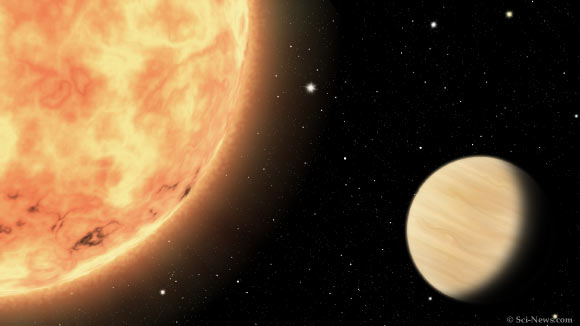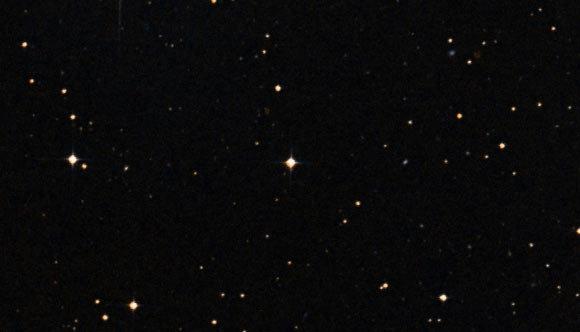TESS Finds Hot Neptune-Like Exoplanet around Sun-Like Star | Astronomy – Sci-News.com
A short-period, hot Neptune-like planet has been discovered orbiting a Sun-like star called TOI-132, thanks to data gathered by NASA’s Transiting Exoplanet Survey Satellite (TESS).
TOI-132, also known as TYC 8003-1117-1, is a G-type dwarf star located about 526 light-years from Earth.
The star is over 6 billion years old and is slightly smaller and less massive than our Sun.
The newly-discovered planet is much closer to TOI-132 than our planet is to the Sun.
It has an orbital period of just 2.11 days and resides on the edge of the so-called ‘Neptune desert.’
“Although Neptune-sized planets orbiting Sun-like stars are fairly abundant, at short orbital periods they are very rare,” said Dr. Matias Diaz of the Universidad de Chile and colleagues.
“A number of early studies indicated a lack of Neptune-sized planets with periods shorter than 2-4 days, and the term ‘Neptune desert’ was coined to explain this paucity.”
Designated TOI-132b, the newfound world is about 23 times as massive as the Earth.
It has a radius of 3.43 Earth radii and a bulk density of 3.11 g/cm3.
The astronomers estimate the planet’s temperature to be about 2,032 degrees Fahrenheit (1,111 degrees Celsius).
“Planet structure models suggest that the bulk of the planet mass is in the form of a rocky core, with an atmospheric mass fraction of 4.3%,” they said.
TESS detected TOI-132b using the transit method, whereby exoplanets crossing the face of a star cause dips in amount of starlight.
The high-precision radial velocity follow-up with the High Accuracy Radial velocity Planet Searcher (HARPS) on the 3.6-m telescope at ESO’s La Silla Observatory in Chile confirmed the planetary nature of the transit signal.
“Future follow-up observations will allow the search for additional planets in the TOI-132 system, and also will help to constrain low-mass planet formation and evolution models, key to understanding the Neptune desert,” Dr. Diaz and co-authors said.
A paper on the discovery will be published in the Monthly Notices of the Royal Astronomical Society.
_____
Matias R. Diaz et al. TOI-132 b: A short-period planet in the Neptune desert transiting a V=11.3 G-type star. MNRAS, submitted on November 5, 2019; arXiv: 1911.02012








